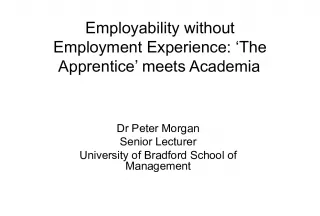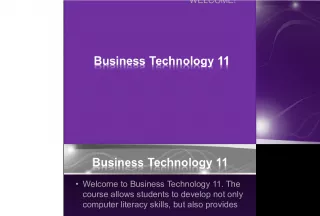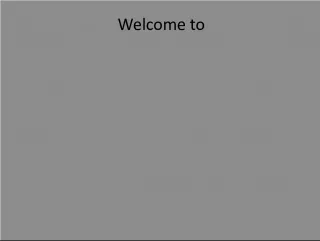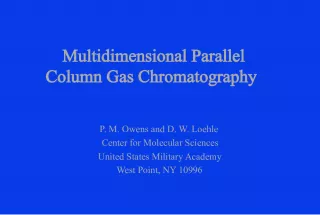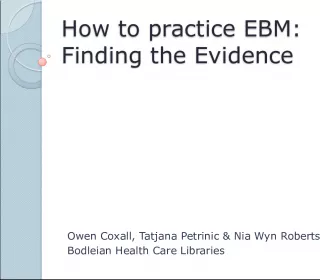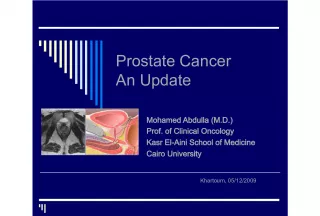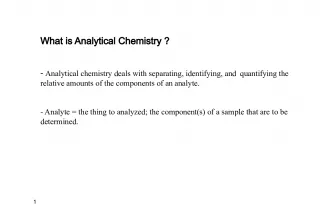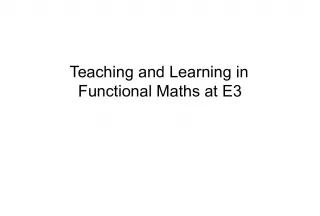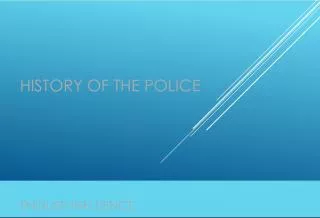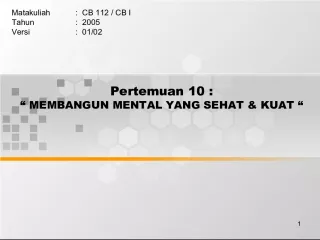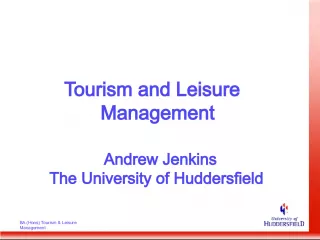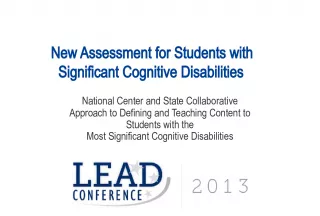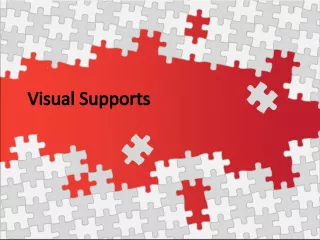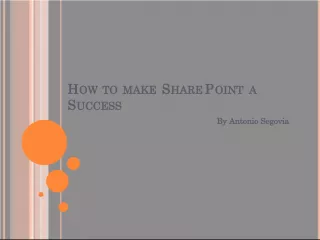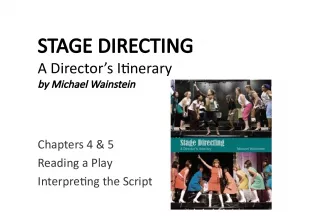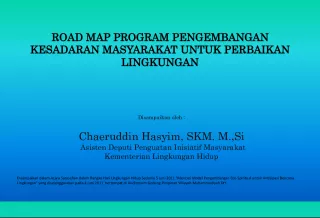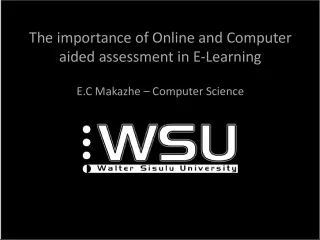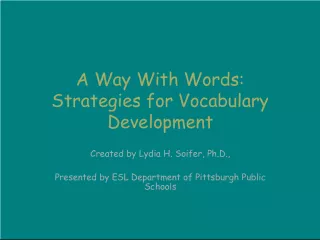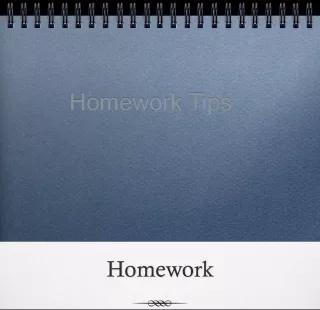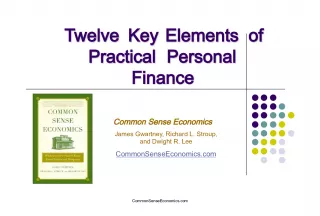Developing Analytical Skills in Students: Practical Strategies


Gain practical tips to help students move from narrative to analysis, enhancing critical thinking skills and achieving academic goals.
- Uploaded on | 4 Views
-
 dibach
dibach
About Developing Analytical Skills in Students: Practical Strategies
PowerPoint presentation about 'Developing Analytical Skills in Students: Practical Strategies'. This presentation describes the topic on Gain practical tips to help students move from narrative to analysis, enhancing critical thinking skills and achieving academic goals.. The key topics included in this slideshow are . Download this presentation absolutely free.
Presentation Transcript
1. More Analysis, Less Narrative More Analysis, Less Narrative Practical Strategies to Assist Students in Developing Analytical Skills
2. Goals 0 Working backward from the Year 12 Revolutions exam, we want to provide you with activities and approaches to scaffold student understanding and performance. 0 We are focussing on: 0 Using 3 or 4 points style questions 0 The ‘D’ questions – Historians’ views 0 Everyday classroom activities to encourage analysis
3. Analysis Students are thinking critically and analytically – doing history , when they are: 0 Solving problems 0 Identifying and selecting relevant evidence 0 Making inferences 0 Identifying significance & strengths and weaknesses 0 Ranking or weighing up the relative importance of ideas, leaders, movements and events 0 Evaluating strengths and weaknesses – corroborating, contradicting
4. Balance Our Challenge : Balance See Hand-Out
5. PART 1: Using 3 or 4 Points Style Questions 0 Scaffolding: 0 The significance of significance! 0 A revolutionary situation? 0 Classification and ranking exercises 0 How do I structure these questions? SIGNIFICANCE
6. Boost Student’s Classification Skills 0 In senior history classes students are often required to explain the significance of an event or events, they are also set the task of explaining how events, people or movements contributed to a growing ‘revolutionary situation’ 0 First, it is important to build up your student’s understanding of these key terms and phrases 0 Consider making a class poster under the title ‘What is significance ’? & ‘What contributes to a revolutionary situation ’? 0 Note: This works well as a think, pair, share brainstorm style activity & can also be represented in a WordCloud
8. “Enhancing students’ and teachers’ ability to assess and articulate claims of historical significance will provide a valuable compass to navigate large amounts of material in meaningful ways Developing Teachers’ Ability to Make Claims about Historical Significance. Lee and Coughlin (May 1, 2001) SCAFFOLD IT! By Year 10, History teachers need to move away from ‘what is’ and ‘describe’ type questions in tests and introduce significance . What we do: Year 9 : In three points, explain long-term causes of WW1. Year 10 : In three or four points explain the significance of the Fall of Singapore in Australia’s changing foreign relations
9. What can be significant? 0 An idea 0 A political movement 0 Person 0 Group of people 0 Natural Event 0 Protest 0 Image (Cartoon, Artwork) 0 Speech 0 Battle 0 War 0 Treaty 0 Political decision 0 Election 0 Song See ‘Criteria of Significance’ Handout
10. What makes something significant? 0 Contributed to a political movement 0 Sparked a protest 0 Unified or divided a political movement 0 Divided or unified a protest group 0 Symbolised discontent or success 0 Rallied a group into action 0 Started or ended a battle or war 0 Sparked a political decision 0 Was a source of inspiration 0 Started a new movement/way of thinking Make a list with your class Regularly complicate and revisit the concept of ‘Significance’
11. What makes something significant? 0 A new idea being introduced or challenged 0 A political movement starting or crumbling 0 A person who instituted or inspired change 0 A group of people who brought about change 0 A natural event that sparked a revolt 0 Protests which galvanised a movement 0 An image (cartoon, artwork, crest, symbol) or song which symbolised a movement or communicated an idea 0 A battle which was a turning point in a war 0 The political or social impact of a war 0 A treaty which sparked protest or had dire consequences 0 A political decision which was a source of anger 0 An election which saw a shift in the political environment 0 A speech that inspired change, communicated a new idea or challenged an established order See Handout ‘Mid Year Exam Revision’
13. What is a ‘revolutionary situation’ ? 0 Instability in the political system or in a political group 0 A protest movement growing in strength, cohesion, arms, numbers 0 A revolutionary idea increasing in popularity 0 The established order or ruling party decreasing in popularity 0 Cause for discontent among the citizenry, army or political factions 0 Increasingly organised ferment in the citizenry, army or political factions What have I missed?
14. What can contribute to a ‘revolutionary situation’ ? 0 The effects of a battle or war 0 Poor living conditions, famine, inequality 0 A new idea challenging established order 0 Corruption in leadership 0 Weaknesses of leaders being exposed 0 Strength of opponents being solidified 0 An event/idea/person forms as a rallying point 0 Unification of opposition 0 Division in leadership 0 Strong leadership of the opposition 0 Increasing popularity of revolutionary ideas or unpopularity of ruling party What have I missed?
15. 0 Many students are still not following the structure of Firstly, Secondly, Thirdly - deciding to opt out and take the easy option of simply just writing a general narrative and trying to tie back to the question at the end. 0 Help them to tie each individual point back to ‘contributed to the development of a revolutionary situation’... 0 A revolutionary situation was born because... 0 A revolutionary situation was well underway when... 0 This laid the foundation for further revolt because... 0 This idea/leader/event galvanised the urban workers/bourgeois/privileged estates etc... into action because 0 This idea/leader/movement/event captured the imagination of such and such who went on to.... 0 This popularised the notion of... 0 This propelled the revolution forward because... 0 This polarised the court because... 0 This was a turning-point in the revolution because... 0 Such was its power that it inspired commemoration celebrations... 0 This seminal work inspired... Refer to hand-out for samples
16. PART 2: The Dastardly ‘D’s Scaffolding: 0 Everyday activities to enhance engagement and confidence for students of all ages. 0 The importance of rubrics. 0 How do I structure these questions?
17. Analysing Sources Learn to dissect sources by putting them together: Back-to back source analysis Group Game source Analysis Freeze-Frame Activities
18. Teaching VCE Historiography The ‘D’ questions: Discriminators Some pitfalls: 0 Students judge Sources to be of little value because the writer ‘was not present’ or is an ‘outsider looking in’ 0 Students literally describe/narrate the content. 0 Context is limited to who wrote the source 0 Encourage students to avoid the ‘bias’ conversation 0 Make sure students understand the difference between usefulness and reliability
19. The D questions: Method Give them a formula/method: ZOOM IN ZOOM OUT WITH THE 4 C’s. ZOOM IN - It’s all about the document 0 CHARACTERISE (or Contextualise): BATCH – Bias, Author, Time, Contention, Honesty – Synthesise this into 3 or 4 lines 0 CONTENTION: 1 or 2 lines ZOOM OUT – Start bringing in your own knowledge and evidence. Support your analysis with other historians’ views . 0 CORROBORATE IT AND/OR 0 CONTRADICT IT See Hand-Outs.
20. The Flight to Varennes (June 20 th 1791) was a key turning point in compounding a republican movement in France. Overall this document is a reasonable representation of the desacrilisation of the king- a psychological pre-requisite for preparing for a life without him . Historian Matthews asserts that to the radicals this proved that the king could not be trusted and the revolution would “enjoy no stability” while he was on the throne- hence his crown is seen to be “slipping” from his head in the extract. The increasing derision was exacerbated in the Massacre and Champ de Mars (16 th July 1791) when symbols of the Monarchy were destroyed and a 30,000 strong crowd demanded a referendum on the King’s fate. Many of the Parisians signed a petition for the abdication of Louis. This dissent, however, that is presented in the document was mainly limited to the people of Paris . Following the event floods of letters from the Catholic provinces reached the National Assembly in support of Bailly and Lafayette’s actions in subduing the crowds. Historian Tackett points out the people started to “consider” a republic indicating that support for a constitutional monarchy was still very much alive. In June 1791 the Jacobins split over members expressing their hope to salvage the monarchy. Short term, it seemed that the conservatives had won when on 13 th September the king accepted the 1791 constitution. Student Sample – Study Score 50
21. The D questions - Rubrics 0 You MUST provide a rubric for difficult questions – The most ESSENTIAL CLASSROOM TOOL. Develop your own. Why? 0 Gives you and your students a common ‘analytical’ language 0 Leads to more targeted process feed-back from the teacher as opposed to praise, criticism, or advice which block progress. 0 When students understand the rubric they can begin to self-regulate. (See Hand-Out)
22. PART 3: Everyday Activities to Enhance Analytical Thinking Scaffolding by: 0 Making PowerPoints Active 0 Sentence starters and close activities 0 Visible Thinking 0 IDEALS/ Criteria of significance 0 Better note-taking 0 Our approach to research SACS.
23. A. Making Power Points Active 0 Beginning & ending your PowerPoint with learning & skill objectives, key questions , summary tables or goals for the lesson 0 Assists students to take notes under key focus points , streamlining the note taking process which can be cumbersome 0 Allows students to measure their knowledge against the lesson’s objective 0 Facilitates a lesson ‘wrap up’ where the class can summarise the information learnt and the teacher can conduct some formative assessment by identifying areas of misunderstanding or any gaps in student knowledge What is your best PowerPoint strategy? What effect does it have?
24. Examples Making Power Points Active
25. Key ‘SAC Style’ Questions Key ‘SAC Style’ Questions In three or four points outline the strengths and weaknesses of the Provisional Government OR In three or four points explain why the Provisional Government only lasted 8months
26. COLLECTIVISATION Reasons the policy was adopted (AIMS) Main features Measures taken to enforce the policy Successes of the policy Failures of the policy (E.g. Human Cost)
27. THE QUESTION: THE QUESTION: What caused the February 1917 Revolution? What caused the February 1917 Revolution? Decide which were the three or four most significant causes of the February 1917 Revolution. Decide which were the three or four most significant causes of the February 1917 Revolution. The Tsar’s poor decision making? E.g. to become commander in chief & to respond to disorder with violence? The Tsar’s poor decision making? E.g. to become commander in chief & to respond to disorder with violence? The effects of WWI on the Home Front’s economy, transport system, food supply? The effects of WWI on the Home Front’s economy, transport system, food supply? The impact of Russia’s defeats in WWI? The impact of Russia’s defeats in WWI? The mutiny of the army? The mutiny of the army? The formation of a political opposition? The formation of a political opposition? The fact that the workers, soldiers, peasants and liberals were united in opposition to the Tsar? Was the growth of this united opposition crucial to the Revolution’s success? The fact that the workers, soldiers, peasants and liberals were united in opposition to the Tsar? Was the growth of this united opposition crucial to the Revolution’s success? Other points…? Other points…? Mark these as long- and short-term causes or trigger events. Mark these as long- and short-term causes or trigger events. Rank these events in order of importance Rank these events in order of importance In three detailed paragraphs explain why you think the top 3 these are the most significant causes of the revolution. In three detailed paragraphs explain why you think the top 3 these are the most significant causes of the revolution. See Hand-out See Hand-out
28. A. Making Power Points Active 0 Keep your students engaged in PowerPoint presentations by constantly presenting them with open ended questions which require judgement 0 Challenge students to identify the main problem or weakness being faced by a group or individual and justify why is it the most important issue 0 Ask students to guess what will happen next and explain why they think this might happen 0 Ask students to identify the primary contributing factor to a movement and support their claim with evidence What is your best questioning strategy? Why do you find it effective?
29. B. Evaluate Sample Answers 0 Annotated and colour coded sample answers can help students to identify the components of high quality work 0 Reading though a mid-range response with a critical eye and marking on areas for improvement can help students to identify common mistakes and solutions to these mistakes See Handout ‘Mid Year Exam Revision’
30. TASK 3: Active reading, fill in the details and connectives Firstly, the provisional government was a weak, unpopular and unstable grouping of liberals and other political parties without a united cause. Following the abdication of Tsar Nicholas II in _____________________ remaining members of the disbanded duma declared themselves the provisional government. The provisional government essentially functioned as a caretaker government, sidled with the difficult tasks of ceasing Russia’s involvement in WWI and organising for the nation’s first democratic elections. The provisional government quickly proved unpopular because of their decision to continue WWI against Germany and launch fresh offensive attacks . This decision served the interest of landowning politicians who made up the majority of the government , ____________, it was unpopular with war weary citizens tired from three long years of _________________________ brought about by war. _____________, the government’s ministers were not united in a single cause but instead drawn together from multiple political parties such as the ____________________________________________ who were preparing to face off against each other in the soon to be formed constituent assembly. _______________ , government ministers had little interest in defending this temporary government body. The unpopularity of the provisional government is reflected in the fact that only a unit of cadets and the women’s unit the Amazons defended the Winter Palace from Bolshevik invaders in October 1917 . This power vacuum opened the door to the Bolshevik’s success in October 1917.
31. DEVELOPING ESSAY PARAGRAPHS The Abdication of the Tsar
32. GENERAL STATEMENT Rasputin’s hold over the Tsarina, and to a lesser extent, the Tsar, made him a dangerous political force that would play a part in the February Revolution. What does the words ‘play a part’ suggest? Why might I include these words?
33. EVIDENCE In what was perhaps his most foolish decision, the Tsar left his German wife, and effectively Rasputin to run the country when he took personal command of the Russian armed forces in September 1915. Eyewitness B Pares observed Rasputin’s hold over the court; ‘ We are faced with the strangest of human triangles… Rasputin, the empress and the emperor; set in ascending order of authority and a descending order of influence’. It was Rasputin’s alleged healing power over the heir to the throne, Alexis, which gained him this influence. Of course, it is widely known now that it was Rasputin’s soothing manner with the boy that eased his suffering, not mystical forces. Nevertheless, the neurotic Alexandra fell increasingly under Rasputin's spell, to the increasing concern of liberals and ultra-royalists. What is the function of this word? What is the point of including this information? What does this quote illustrate?
34. ANALYSIS/SIGNIFICANCE The royalist’s concerns regarding Rasputin’s influence were not unfounded. For not only was Rasputin at the center of drunken sexual scandals with aristocratic ladies, but the Tsarina increasingly depended on him for advice in government. In fact, in the sixteen months between the Tsar’s departure for the Russian front and Rasputin’s assassination in December, 1916 , Russia had four prime ministers, five ministers of the interior, four ministers of agriculture and three ministers of war . Russia was destabilized and revolutionary conditions forged. What is the function of this sentence? What is the point of including this information? What does this information illustrate? What is the function of this sentence?
35. CONCLUSION The rapid turnover of officials weakened the government and was a fatal blow to the survival of the monarchy. What is the function of this sentence?
36. C. Explicitly Teach the use of Connective Terms Sequence 0 first(ly) initially, second(ly), to begin with then, next earlier, later after, following Additional Information 0 in addition, and, similarly, likewise, as well, besides, further more, also, moreover, and then, too, not only, for example, for instance Consequence 0 as a result, thus, therefore, consequently, it follows that, thereby eventually Contrast 0 However, on the other hand, despite, in spite of, though, although, on the contrary, otherwise, rather, whereas, nonetheless, even though, compared with, in contrast, alternatively, similarly, in contrast, unlike, although Summarise & Results 0 Overall, this demonstrated, above all, consequently, finally, therefore What is the most effective technique you have used to improve student’s use of connective terms?
37. Example Explicitly Teaching the use of Connective Terms
38. STUDENT TASK 6: Turn this information into a paragraph which presents an argument . Use at least four connective terms to structure and advance your argument . In your annotation explain why you have used each connective term . When Lenin returned to Petrograd April 1917 and issued his April Thesis . Lenin’s message came as a shock, even to the Bolshevik Party – Lenin denounced cooperation with the Provisional Government: as a ‘parliamentary bourgeois’. He demanded an end to the ‘Imperialist war’ (WWI), nationalisation of banks and distribution of land to the peasantry. Lenin developed two powerful slogans: ‘Peace, land & bread’ and ‘All Power to the Soviets’. Lenin saw the time for Revolution was ripe – ‘History will not forgive us if we don’t assume power now’. 24 th Oct – Trotsky’s Red Guards take control of post- offices, bridges, bank – basically key vantage points. 25 th Oct – The Red Guards ‘Stormed’ Winter Palace. 26 th Oct –Petrograd Soviet announces the ‘Provisional Government has been overthrown. Well timed. See Handout ‘Mid Year Exam Revision’
39. D. Explicitly Teach Key Terms 0 Analyse : Identify components and the relationship between them 0 Critically Analyse: Add a degree or level of accuracy depth, knowledge and understanding, logic, questioning, reflection and quality to your analysis 0 Compare: Show how things are similar or different 0 Define : State meaning and identify essential qualities 0 Identify: Recognise and name 0 Justify : Support an argument or conclusion with evidence 0 Summarise: Express, concisely, the relevant details 0 Synthesise: Putting together various elements to make a whole
40. Example Activity 0 Set students the task of explaining the difference between two key terms 0 Groups are given a written document, different groups are set the task of completing one or two questions or task from each category. 0 E.g. One group is to analyse, another to summarise 0 Compare the results and challenge students to explain the steps they took to undertake their task
41. E. Use sentence starters to increase detail and judgement 0 In _______(date) ________ (person or group) began/ introduced ______________ (policy or change) which _________________ (what changed exactly ?). Importantly, _______’s decision to ________ (key action) had the effect of ________________________________________. 0 ____________(event) in _________ (date) demonstrated the ___________. 0 ____________(event) in _________ (date) is an example of _________. 0 ____________ (factor) contributed to __________ (movement) by _________________ (influence/effect). For example in ___________(date) _______________(leader or group/s) such as ___________________(specific example) ______________________ (key event or example) which had the effect of _________________________________. E.g. The Kronstadt uprising in March 1921 demonstrated the increasing resentment of the working class to Lenin’s harsh and restrictive economic policy of War Communism .
42. F. Everyday Analytical Classroom Activities Harvard Project Zero Thinking Routines to make thinking ‘visible’ E.g. 0 Headlines Routine 0 True for Who? 0 Tug For Truth http://www.visiblethinkingpz.org/VisibleThinking_html_files/03_ThinkingR outines/03d_UnderstandingRoutines/Headlines/Headlines_Routine.html
43. Headlines Routine 0 Before you leave – choose two students: 0 If we were to write a headline for this topic right now - one that captured the most important aspect that should be remembered, what would it be? See Handout ‘The 1905 Revolution’
44. True for Who? 1. Choose a controversial claim: Terror was a sacred transaction in which the foundation of values required the death of men – Sophie Wahnich 2. Brainstorm: make a list of all the viewpoints we could look at this claim from 3. Dramatise – Dramatically speak from that point of you: 0 My view is 0 This claim is true/false/uncertain 0 I may change my mind if 4. Reflect: Step out of your role. Have you any questions for anyone in the group?
45. Mini Research Projects using the IDEALS method I dentify the problem D efine the Context – what are the facts which frame this question? E numerate the Choices – What are the options? A nalyse the Options – What is the Best Course of Action? L ist your reasons explicitly and signpost your arguments. S elf-correct – Is there anything we have missed? Any further information we need ? E.g. 0 What are the Top 3 turning points in the story of the revolution so far? 0 To what extent do individuals pervert the course of revolution? 0 Why didn’t the Allies bomb Aushwitz-Birkenau? 0 How did such a civilised nation produce such a violent regime? 0 Why are women vilified in History?
46. G. Help students take good notes ... 0 Study cards 0 Episode Charts (DOL) 0 Scaffolding – Our approach to research assignments/SACS... See Handout
47. Brunswick Manifesto 25 th July 1792 Commander of Austrian forces Duke of Brunswick threatens Parisians of an “ever memorable vengeance” should any harm come to Louis or the royal family Significance o Crystallises all existing, generalised fears into a specific, tangible fear that the king is involved in a gigantic conspiracy o Louis and the moderates in real danger By early August THE ENEMY IS NOW 160KM FROM PARIS Headings=Red. Dates=Green. Other facts (people, policies, places) =Blue Quotes=Purple and Significance ranked
48. Other Ideas 0 Tables - get students to create 3 columns in their workbooks. Details of Event Significance Historiography
